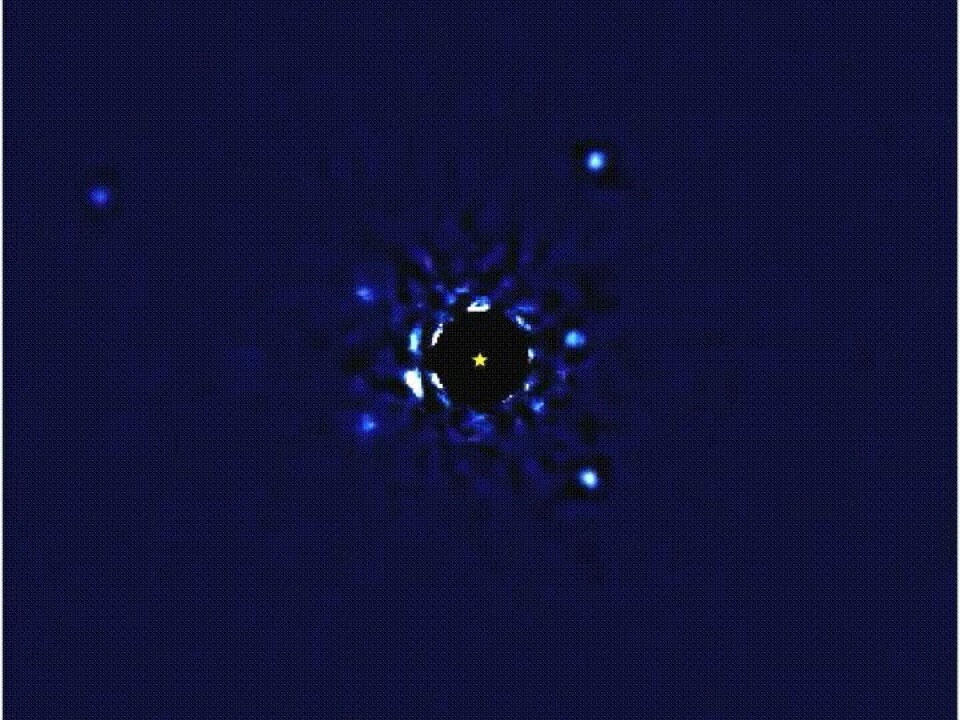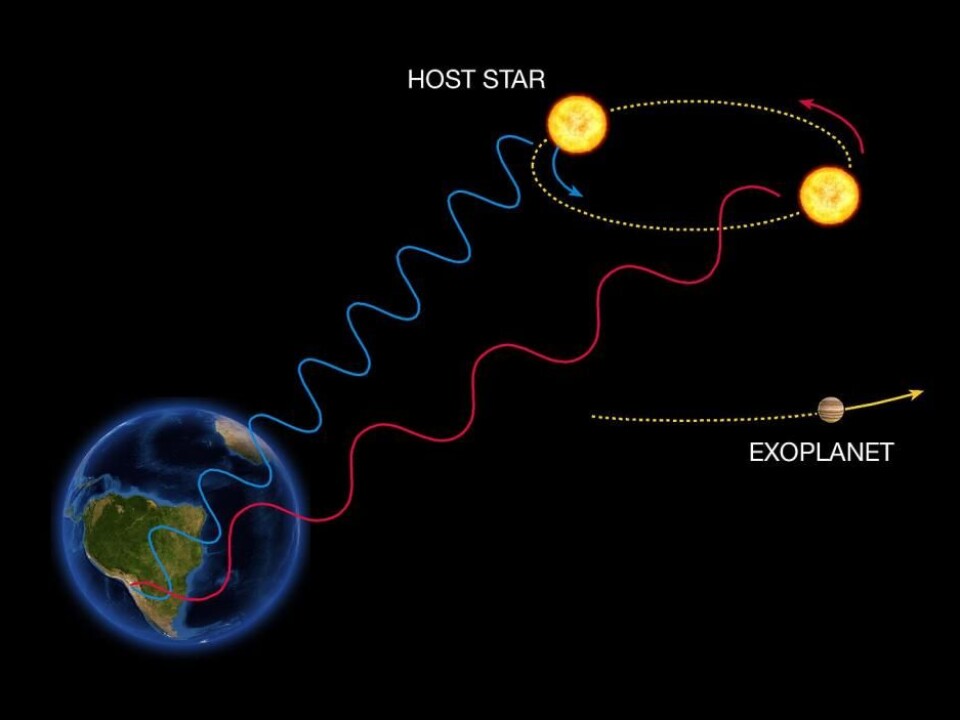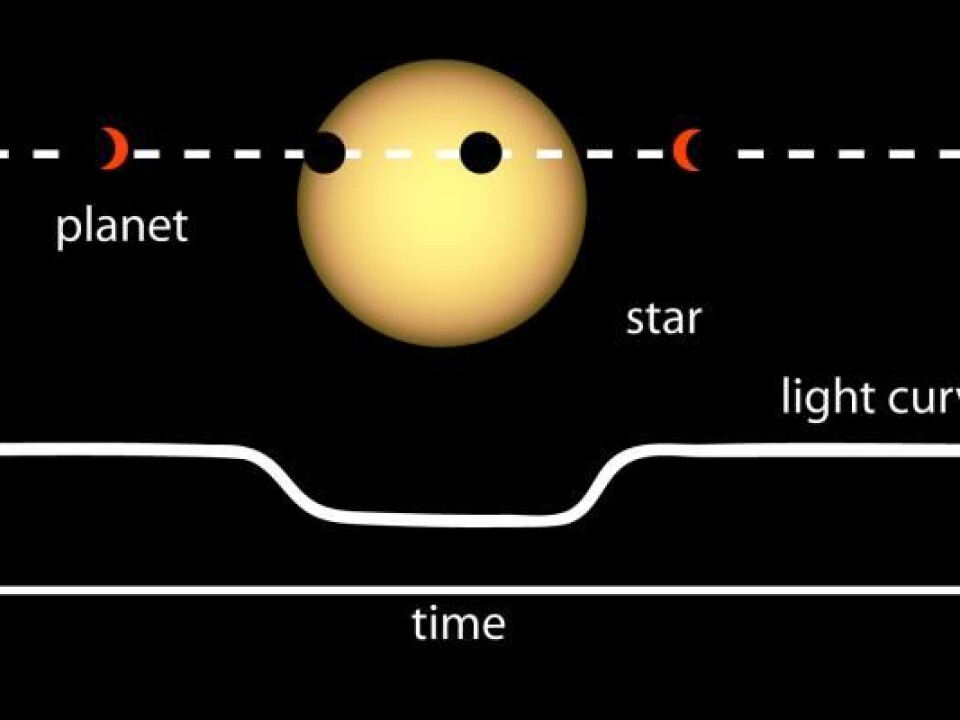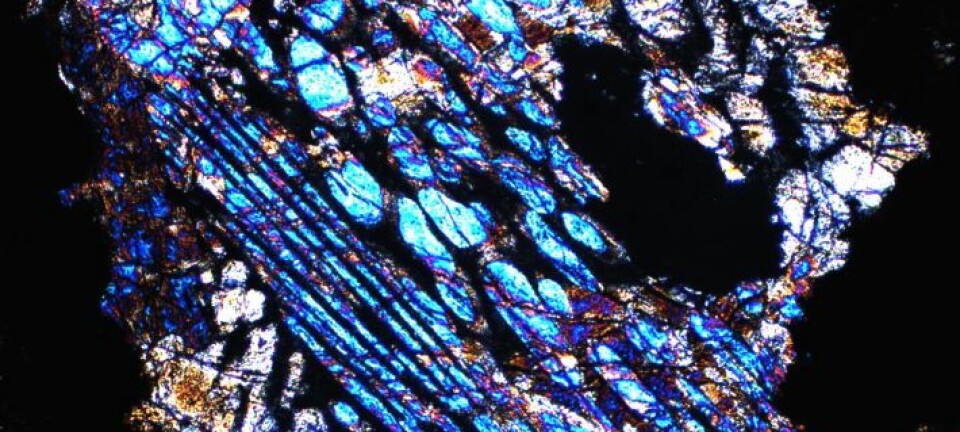
How do scientists find new planets?
Technological advances have allowed scientists to find thousands of exoplanets during the past few decades. But even better methods are on the way, and perhaps we will find life on other planets within the next 20 years.
The idea of life on other planets is old and can be traced back to ancient times, but until just a few years ago this was all it was—an idea.
The breakthrough occurred in 1995 when we discovered the first exoplanet—a planet in orbit around another star. Suddenly, we were a little less alone in the universe.
Even though it is a young research field, the hunt for exoplanets has exploded in the last 20 years.
Within this time, we have discovered more than 3,500 exoplanets and more than 4,000 unconfirmed candidates. On average, there is more than one exoplanet for every star, meaning that there are more exoplanets in the Milky Way than there are stars.

We have become so good at finding exoplanets that it has almost become trivial. Now we are instead pushing our instruments and methods to the limit to learn more about what these planets are made of, and whether any of them have an atmosphere or water at the surface.
But of course we also want to know the answer to the biggest question of all: Could there be life on other planets?
Read More: Denmark invests millions in world's biggest telescope
We can see exoplanet heat radiation
Exoplanets are difficult to find. They do not emit light like stars, they are too small to block large areas of background light like interstellar clouds, and their mass is so small that their gravitational pull does not affect their surroundings anywhere close to the degree that dark matter can.

We find most exoplanets with the so-called indirect method, which observes them indirectly, although we have been able to take images of some. Like anything else that has a temperature, exoplanets emit heat radiation.
An exoplanet will for the most part drown in light from its parent star, which shines many million times stronger, but if the system is close enough to us and if the distance between the planet and the star is big enough, then it is possible to take a photo of the exoplanet and distinguish it from its star.
The two most successful indirect methods are the radial velocity method and the transit method, which together have discovered over 95 per cent of the exoplanets we know today. The methods are indirect, because we do not observe the exoplanets themselves, but instead we observe how they affect the stars they orbit.
Read More: History of the Milky Way revealed: The age of distant planets
The radial velocity method

When we found the first planet in orbit around another star in 1995, it was by using the radial velocity method. The method assumes that a planet pulls a little bit on the star that it orbits due to their mutual gravitational attraction. This causes the star to wobble a little bit, while the planet moves around in its orbit.
This causes a change to wavelength of starlight that we record, called a Doppler shift. This means that the starlight is either red-shifted (waves appear longer and shift towards the red part of the light spectrum) when the star moves away from us or blue-shifted (waves appear shorter and shift towards the blue part of the light spectrum) when the star moves towards us.
We can find these planets by searching for a periodic red or blue shift in the spectrum of light emitted by its star.
In our own system, Jupiter is the largest planet and it makes the Sun rock back and forth a little over 12 metres per second. The best spectrographs that we have today has a precision of a little under 1 metre per second.
To reach this precision, it sits in a vacuum and is cooled to 0.01 degrees above absolute zero. It’s an impressive precision, but it is not quite accurate enough to detect the equivalent effect of the Earth, which can influence the Sun’s speed by 0.1 metres per second.
Read More: Ice age bacteria may reveal where to look for life on Mars
Planetary transit method
If a system is orientated such that a planet’s orbit brings it in front of the star as seen from Earth, it will block out some of the starlight. This is called a planetary transit and using the transit method allows us to detect planets that periodically cast a shadow on their parent star.
We’ve used the transit method to find most of the exoplanets that we know today and for that, we can thank the Kepler space telescope. It was launched in 2009 and keeps a constant watch for changes in light from more than 145,000 stars in one little section of the sky.
So far, it has discovered more than 2,000 exoplanets and more than 3,000 unconfirmed candidates.
Read More: New discovery: small planets have circular orbits
Forty potentially habitable planets
Both methods allow us to detect periodically repeating patterns of red and blue-shifted light, or blocking of starlight. One period corresponds to the planet completing one full orbit around the star, from which we can calculate the distance of the star to the planet, and thus the planet’s average surface temperature.
If we observe an exoplanet with both methods, then we know both its mass and size and therefore can calculate its average density.
This is where it gets really exciting, as now we can start to estimate whether the planet is habitable—or at least what we understand as being habitable based on our own experience here on Earth.
We have found around 40 such planets, of similar size to Earth, which are neither too cold nor too warm for liquid water to exist at the surface. The nearest is Proxima Centauri b, just four light years away.
Read More: Physicists discover an "ozone layer" on distant exoplanet
Are we alone?
The biggest question—perhaps the only one—for a planet hunter is: Are we alone?
Our methods and instruments are so good that we can evaluate whether an exoplanet is (potentially) habitable or not, but how can we find out whether any of them actually are inhabited?
One option is to look for so-called bio-signatures in the atmosphere.
The presence of life can completely change the composition of a planet’s atmosphere and maintain a form of imbalance that otherwise would quickly disappear.
For example, 20 per cent of the Earth’s atmosphere is oxygen, which is primarily produced by plants. If life on Earth suddenly disappeared, the oxygen would disappear from the atmosphere as it reacts with its surroundings.
In the course of the planetary transit, a little bit of the starlight will move through the planet’s atmosphere towards us. Depending on the composition of the atmosphere, some of the wavelengths will be absorbed and others will pass through.
Read More: Scientist: We could find intelligent life in space within two decades
Need to study the atmosphere
We can detect this light and use it as a kind of bar-code to identify what the atmosphere is made of. This requires a certain amount of light to reach us and we have to be able to distinguish it from the rest of the starlight—and this is where we run into difficulties.
So far, we have only been able to do this for large exoplanets (large gas giants with deep atmospheres), but even then, we have very little information and these data are associated with large uncertainties.
Our current telescopes are simply too small and we need to wait for the next generation before we can get a closer look at the atmosphere of these potentially habitable exoplanets. But luckily, this is not that far off.
We are in the process of building the E-ELT telescope, which, with its dish diameter of 40 metres, will be the world’s largest optical telescope by the time it is complete in 2024. Before then, the James Webb Space Telescope will be launched—the successor to the Hubble telescope.
Both telescopes will be able to study the atmosphere of some of the potentially habitable exoplanets. But before then, Kepler’s successor, the TESS space telescope will be launched next year, with a mission to find even more potentially habitable planets.
Here on Earth, life began just a few hundred million years after the planet formed.
With many billions of potentially inhabitable planets in the Milky Way and the next generation of telescopes just around the corner, you could argue that if life begins as soon as the conditions are right, then we will find life on an exoplanet within the next 10 to 20 years.
---------------
Read this article in Danish at ForskerZonen, part of Videnskab.dk
Translated by: Catherine Jex









